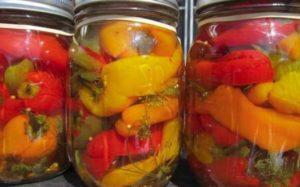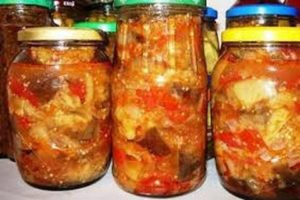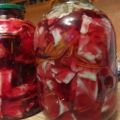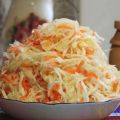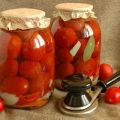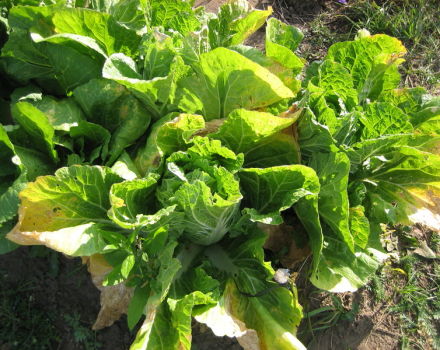TOP 6 recipes of pickled cabbage with Aspirin for the winter
In the fall, the housewives are faced with the acute question of providing the family with vitamins in winter. Various preservation methods are used to preserve the beneficial properties of vegetables. And pickling cabbage with everyone's familiar Aspirin is a proven, simple, but effective and tasty way for harvesting it for the winter. In addition to its high taste, it has a long shelf life thanks to the addition of these safe tablets.
Benefits of using acetylsalicylic acid in conservation
Acetylsalicylic acid (or Aspirin) is a medicine that has anti-inflammatory, antipyretic effects for humans and oxidizing, preserving properties for vegetables. These features of the drug began to be widely used for canning back in the distant Soviet years. At that time, artificial preservatives were not yet widely used, and vinegar was a scarce product.
The recipe is completely safe for the human body, and the cabbage itself does not deteriorate for a long time, it becomes crispy, retains its color, aroma and taste. In addition, Aspirin helps her to marinate faster, allows you to store blanks even in warm home pantries - they will not get moldy and ferment.
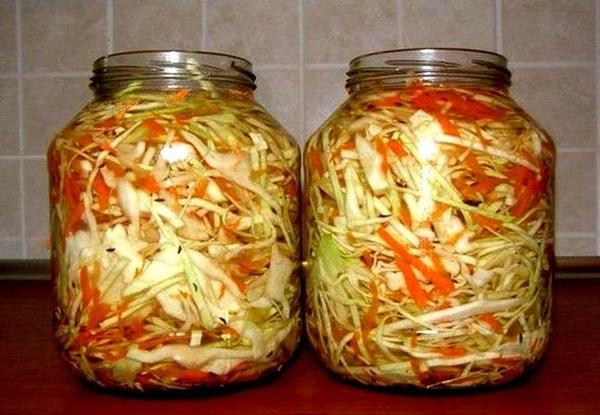
Which cabbage is right
Fresh, not spoiled or rotten cabbage is suitable for the recipe. The heads of cabbage should be dense, strong, with juicy, not crumpled leaves, without obvious damage by pests.
For pickling, both the usual white cabbage and Peking cabbage, cauliflower and salad are suitable.
White-headed
The most familiar and proven type of cabbage for pickling for the winter. To do this, it is both chopped and grated; onions, garlic, and carrots are added from other vegetables. Choose medium-late or late varieties that have a much longer shelf life than early ones.

Beijing
It has a more pleasant taste, delicate structure than white cabbage, and pickles much faster. It is harvested both cut into strips and in large pieces. One of the most popular and widespread recipes is "Korean cabbage".
For pickling, choose elastic, strong, juicy green heads of cabbage.
Colored
Pickled, crispy Peking cabbage is used to prepare savory salads, as a side dish for many dishes (especially meat) and is a nutritious, original appetizer. For cooking, choose strong, dense heads of cabbage that have not begun to bloom, without traces of damage by pests and rot.

Salad
It is similar to regular, sauerkraut, but much tastier, more juicy and crunchy. It is made from chopped white cabbage with the addition of carrots, garlic, onions and vegetable oil. Nowadays, the use of kale (lettuce) is becoming more and more popular, for example, as a leafy pak-choy or curly - kale, grunkol.

Recipes for cooking cabbage with Aspirin for the winter
They differ only in the number of ingredients and the method of preparation. But the recipes will not cause any difficulty for the housewives, and the addition of Aspirin will help preserve the conservation for a long time.
Hot way
This option provides for the filling of fresh, chopped cabbage with hot brine. Before cooking, it is examined, separating spoiled, crumpled and rotten leaves.
For cooking take:
- carrots (large) - 3 pieces:
- cabbage (medium) - 2 forks;
- sugar - 4 tablespoons (with a slide);
- salt (coarse) - 3 tablespoons;
- bay leaf - 3-4 pieces;
- black pepper (peas) - 7-10 pieces;
- Aspirin (tablets) - 3 pieces;
- cloves 2-3 buds;
- water - 1 liter;
- vinegar - optional.
Cooking technology:
- First, the vegetables are chopped, then poured into a tall bowl and mixed thoroughly to evenly distribute the layers. Moreover, vegetables can be shredded or grated.
- At the bottom of each sterilized jar, pour a third of a tablespoon of sugar, table salt, peppercorns, put bay leaves and add half of the crushed Aspirin tablet. Then the jars are filled up to half with the cabbage-carrot mixture.
- Now they pour in another third of a tablespoon of sugar, salt, the second crushed half of Aspirin and again cover the shoulders with the vegetable mixture.
- Then water is poured into a saucepan, salt and sugar are poured and put on fire. Bring to a boil, cook until the ingredients are dissolved.
- A clove is placed on top of the jars and poured with hot brine, and the container is sealed with plastic lids and placed in a warm place for 10 hours.
- After that, several deep punctures are made with a wooden skewer in the vegetable mass. Then they insist for another 10-12 hours. You can add a spoonful of vinegar if you wish.
- Now the cans are tightly sealed with lids and stored in a cold place.

Cold way
It differs, first of all, in the temperature of the brine itself, which is poured into the vegetable mixture. But the ingredients and their amount remain the same as for the hot method.
Cooking technology:
- Water is poured into a saucepan, put on fire, vinegar (optional), Aspirin (2-3 tablets per 3 liter jar), clove buds are added and allowed to boil.
- Then they are removed from the stove and allowed to cool to room temperature.
- The vegetables are grated on a coarse grater, mixed thoroughly, but not pressed.
- Then the mixture is distributed over sterilized jars, poured with brine to the top, corked with lids and placed in a cool place for permanent storage.

Sauerkraut with Aspirin for the winter
You can also tastefully ferment cabbage with the addition of acetylsalicylic acid according to the following recipe. At the end of cooking, the jars with the vegetable mixture are poured with hot brine.
Ingredients:
- cabbage - 1 large head of cabbage;
- carrots (large) - 1 piece;
- salt - 3 tablespoons;
- sugar - 3 tablespoons;
- bay leaf - 4-5 pieces;
- black pepper - 10 peas;
- cloves - 10 buds;
- Aspirin - 3 whole tablets.

Recipes in jars with Aspirin
It is convenient to cook it right away in jars, pouring the vegetable mixture with crushed Aspirin, salt and sugar 2-3 times. When filling the container, chopped vegetables tamp well. Bay leaves, fragrant peppers and cloves are spread on the bottom of the jar, and brine is poured on top. Then the jar is sealed with a lid, turned over and allowed to cool, and then removed for permanent storage.
To do this, use the following ingredients (the recipe is designed for a 3-liter bottle):
- white cabbage - 2 heads (how many will fit in a jar);
- large carrots - 2 pieces;
- medium bay leaf - 3 pieces;
- Aspirin - 3-4 whole tablets;
- cloves - 2-3 buds;
- black pepper - 5-7 peas;
- 3 tablespoons of salt and granulated sugar.

Marinated with spices
For this tasty, spicy, beautiful and aromatic preparation, both white cabbage and red cabbage, which looks spectacular when rolled, are suitable. Shredded cabbage is transferred to a saucepan, poured with a liter of cold water with dissolved salt, mixed and left for 12 hours.
Then they let the juice drain, pouring it into a colander, and then boil the spicy brine on the stove. The cabbage itself is poured into jars, poured with spicy brine and tightly closed with lids. It is used for filling pies, pies, as a nutritious side dish, as a separate dish or as an excellent snack for alcoholic beverages.
Ingredients:
- white cabbage - 1/2 head of cabbage;
- anise - 6-7 seeds;
- hot pepper - 1-2 pods;
- ground ginger - 1 teaspoon;
- fennel seeds - 1/2 teaspoon;
- mustard seeds - 1 teaspoon;
- Aspirin - 1 tablet.

Carrot option
It is tasty and healthy to pickle cabbage for the winter with carrots. Such a blank can be stored for a long time and will be an excellent side dish for many dishes, a hearty snack or filling for dumplings and pies. Moreover, the workpiece can be rolled up or simply corked with a plastic lid. But in the second case, the shelf life will be much shorter.
For cooking you will need:
- cabbage - 2.5 kilograms;
- carrots - 150 grams;
- sugar - 60 grams;
- salt - 60 grams;
- Aspirin - 3 whole tablets;
- pepper (black) - 8-12 peas;
- bay leaf - 4-5 pieces.

Storage rules and periods
The ideal place for storing such workpieces is cold basements and cellars that do not freeze in winter, with a temperature of + 2 ... + 3 C degrees. At higher temperatures, cabbage picks up acid every day. Under the right conditions, such a blank does not lose its taste for up to several months.
For longer storage, cabbage is rolled up in glass jars. Then storage in an ordinary home pantry is possible, and the shelf life increases from six months to 1 year. An important condition is that banks should be in the dark.
